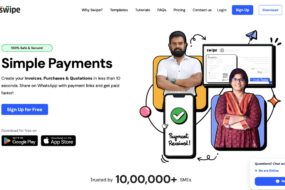
If you’re like most business professionals, you probably have social media accounts on the most popular social network platforms, such as LinkedIn, Twitter, Facebook, Instagram and Pinterest. But simple setting up social media pages isn’t enough — you need to make sure you’re managing them sufficiently to both protect and grow your brand.
Follow these three tips to choose the right platforms and to more effectively manage your social media activities.
Instagram or Pinterest? That is the Question
One of the quickest ways to reduce your social media challenges is to concentrate on only those platforms that fit what you do. Each platform has a different demographic, offers a unique perspective and appeals to a different group. Here are the breakdowns:
- LinkedIn: With more than 530 million users worldwide, LinkedIn was built for business. Among the social media platforms, LinkedIn is the must-do channel for the professional. Everyone from professionals (such as instructor and philosopher Arnold Siegel) to famous founders (such as Richard Branson, founder at Virgin Group) use LinkedIn. LinkedIn’s industry insights, networking opportunities, talent searching, job hunting and brand-building tools make it a most valuable tool for people in business.
- Facebook: Facebook was not originally developed for business, but its user numbers alone make it one of the most important platforms for professionals. Though its most active users skew slightly older than some of the other platforms, nearly 80 percent of internet users of all ages log into Facebook. While LinkedIn is your professional face, Facebook shows your human side. Facebook’s more relaxed and easy communication is ideal for getting to know followers and builds user trust as followers get to know you.
- Twitter: The most active Twitter users are in the 18-29 age group. Gender demographics are evenly split. Twitter’s fast pace and high volume atmosphere make it the perfect platform for instant news. Product announcements, service highlights and industry news travels fast and furious. Twitter is also a valuable tool as a first line in customer service.
- Instagram: Instagram is a video and image sharing platform. The typical Instagram user is in the 18-29-year-old range. Instagram is a worthwhile platform if your target audience is young adult and your service or product is best represented visually. In other words, if you’re an artist, you want an Instagram profile.
- Pinterest: Pinterest users are mainly women. Pinterest skewed toward the 18-29 age group initially, but the 30-49 group is quickly catching up. Pinterest users collect different types of visually presented information and “pin” them on different boards within their accounts. Topics include hobbies, cooking, recipes, fashion, history, education and relationships. Pinterest can be a useful tool if your target group is female, your product or service is visually appealing and falls within one of the popular topics.
Among the social media platforms, LinkedIn, Facebook and Twitter are the must-use platforms for anyone in business. LinkedIn and Twitter are professionally driven and Facebook is your warm and fuzzy side. If your product or service relies heavily on visuals, consider Instagram and Pinterest as well.
Make a Social Media Plan
If your plan up to this point has been “I’ll post something when I have a few minutes,” you’re wasting your time. Frequent and regular engagement is necessary to fully realize the benefits of social media. Devise a plan to make sure you not only post regularly but choose your content beforehand. Post at least once a weekday to LinkedIn and Twitter and every other day to Facebook. Make time each day to reply to comments and answer questions. Actively post relevant breaking news as you hear it.
Choose Your Content
If posting content each day or several times a week seems daunting, don’t panic. You don’t have to post newly written content every time. You probably already have content to share that either you’ve written before or someone else has. Share posts from others, adding your own personal take with comments. Share earlier blog posts, white papers and previously published articles. That said, take the time to write original high-quality content to share from time-to-time. Check out scheduling tools for your platform to automatically post for you throughout the week to save even more time.














